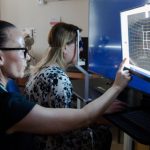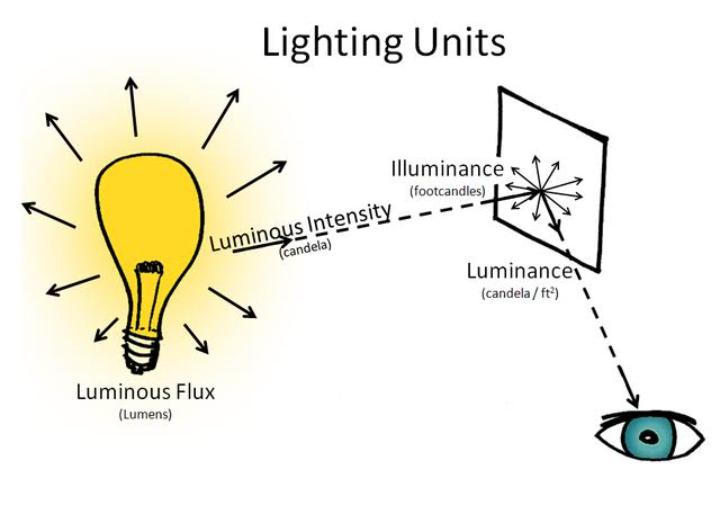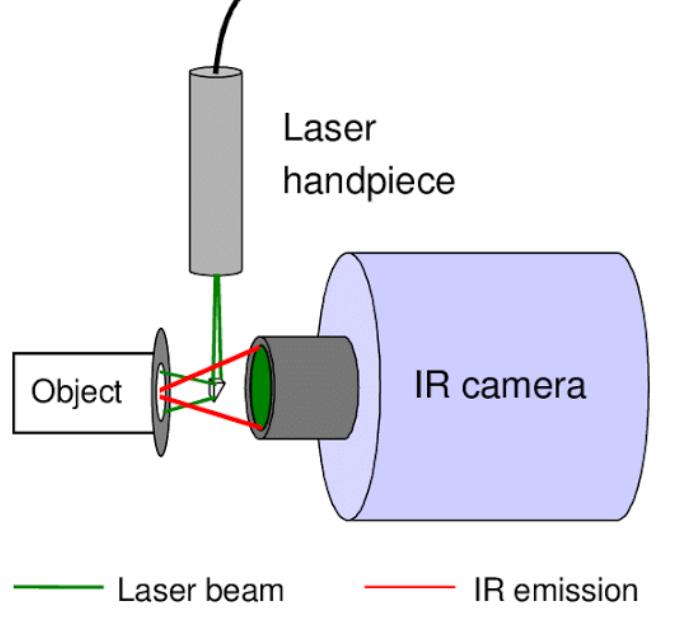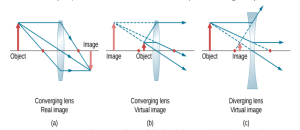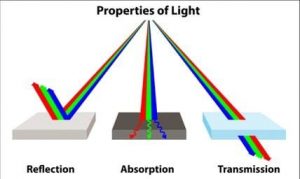DEFINATION: (photo = light, metry = measurement) Photometry is the branch of science that deals with the measurement of visible light in units that are weighted according to the sensitivity of the human eye.
Photometry is a subset of radiometry; and radiometry is the measurement of light waves in the optical portion of the electromagnetic spectrum that is ultraviolet rays, visible light rays, and infrared light. Whereas photometry is the measurement of light rays that is visible to human eye.
The four main quantities of Photometry:
Luminous Flux: luminous flux is the measurement of the total amount of light (i.e. visible radiant energy) emitted from an illuminating source in all direction.
The unit of luminous flux is Lumen (lumen is defined as luminous flux or the amount of light produced per unit solid angle from a point source of one international candle power).

Luminous intensity: It is the amount of lumen produced by a light source in a particular direction per unit solid angle. I.e. a light bulb may emit total of 1000 lumens in all direction, but its luminous intensity is specified in one particular direction.
The unit of luminous intensity is candela (candela is defined as one lumen per steradian; a steradian is a solid angle from a conic section of a sphere)
Illuminance: Illuminance is the visible light that falls on a surface.
The unit of illuminance is Lumens per square meter (luminous flux incident on per unit surface area).

Luminance: Luminance is the measure of amount of light being reflected back from a surface that is being illuminated by a light source. That is how much bright we see an object.
The unit of luminance is Candela per square meter (cd/m2) and Foot-lamberts. (Candela per square meter means amounts of light intensity per square meter of an area; and there are 3.426 cd/m2 per foot – lambert)

How to measure all the four components of photometry?
That is by photometer; it is an instrument that can be used to measure luminous intensity, Luminous flux, Illumination and luminance. Photometers are used in different industries from medicine to astrophysics and there are different types of photometers.
Visual Photometer: This photometer is used to compare the luminance of two surfaces.
Goniophotometer: A goniophotometer is used for measurement of angular distribution of luminous intensity.
Luminance meter: This device is used to measure the brightness that is visible light energy produced by an illuminating source.
Illuminometer: It is used to measure amount of light falling on a surface.
Spectrophotometer: This device is used to measure the spectral energy distributed from a light source, it measures the energy in small wavelength bands by means of a scanning slit, and the results are presented as a spectral distribution curve.
Spherical Photometer: It is an integrated sphere that converge all the power emitted by the source to the detector head to measure the total luminous flux (visible energy) emitted by a light source.
Flicker Photometer: This photometer is used to compare the brightness of two light source, it is based on the principle that flicker between two alternately illuminated light source is set at such a speed that the colour differences disappear and the brightness of the two becomes equal.
Therefore in order to achieve the correct illumination it is necessary, not only to measure the quantity of light emitted by a source but also the amount of light falling on the surface. Thus standards have been set so that the amount of light that should fall upon a surface (the illuminance) to provide satisfactory vision that would also safeguard against eye strain. Commercially available illuminance meter can be used to determine if lighting condition meet industrial standards.
| Area or Activity | Illumination | |
| lux | Foot-candles | |
| Classroom | 500 – 1000 | 50 -100 |
| Eye surgery | 1000 – 2000 | 100 -200 |
| Library | 200 – 500 | 20 -50 |
| Restroom | 100 – 200 | 10 -20 |
| Elevator | 100 – 200 | 10 – 20 |
| Industrial packing and labeling (general) | 200 – 500 | 20 – 50 |
| General residential lighting | 50 – 100 | 5 – 10 |
| Exhibition hall | 100 – 200 | 10 – 20 |
| Residential dining room | 100 – 200 | 10 – 20 |


